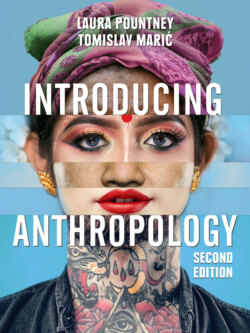Читать книгу Introducing Anthropology - Laura Pountney - Страница 39
Human pelvis shape and size are different from those of other primates
ОглавлениеAs we have seen, bipedalism and the long, slim bodies that go with it were advantageous for humans to be able to move quickly and efficiently in the savannah environment. However, these changes also resulted in changes in the shape, size and position of the female pelvis, which meant a narrower birth canal in females. As a consequence, giving birth became a more difficult and risky process for humans than for most other primate species. The result is that humans give birth to babies that have not achieved the stage of brain development that is typical at birth for apes, monkeys and most other mammals. This particular feature of our evolution appears to be quite recent; it was around 500,000 years ago that there was evidence of the large human brain.
mammal Any warm-blooded vertebrate animal, including humans, characterized by a covering of hair on the skin and, in the female, milk-producing mammary glands for feeding the young
During delivery, human babies must turn to be able to squeeze through the narrow birth canal in order to accommodate their comparatively large heads followed by their shoulders. The way that this is achieved is by babies having a soft skull that is not fully formed at birth. Birth, therefore, is usually a long, tiring and painful process for the mother as well as a risky one for the baby. Because of this, unlike other primates, human mothers generally need help in childbirth.
The consequence of this evolutionary adaptation is that newborn human babies are more vulnerable and undeveloped. The bones of the skull grow and fuse together during the first year of life, which means that human babies are extremely vulnerable during this time and in need of a lot of protection and nurturing.
